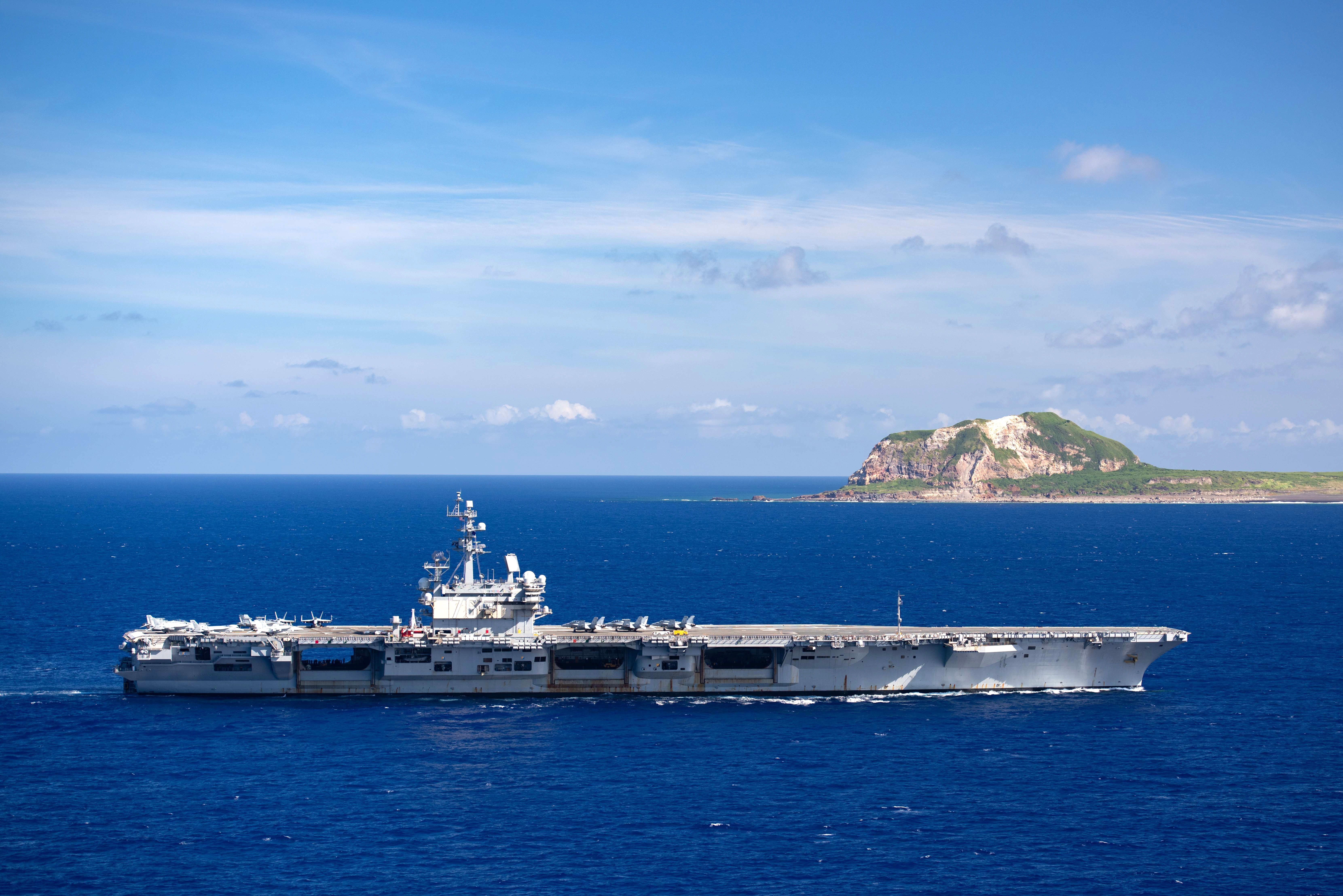
This post has been updated with a statement from the Office of the Secretary of Defense.
The American aircraft carrier based in Japan will make a rare deployment to U.S. Central Command to support the U.S. withdrawal from Afghanistan later this summer, two defense officials confirmed to USNI News on Wednesday.
USS Ronald Reagan (CVN-76), its escorts and Carrier Air Wing 5 will replace USS Dwight D. Eisenhower (CVN-69) and its strike group as part of the movement of U.S. troops out of Afghanistan by the Sept. 11, 2021 deadline announced by the Biden administration earlier this year, the officials confirmed to USNI News.
Navy officials did not comment on the move to USNI News on Wednesday.
In a statement, a Department of Defense spokesman said the Pentagon had no new deployments to announce as part of the withdrawal from Afghanistan.
“As you have seen over the past several weeks, when such deployments do occur, we talk about them when the time is appropriate and provide frequent updates. DoD will continue to ensure that commanders have what they need to support a safe and deliberate withdrawal of forces from Afghanistan, but we will not get ahead of any future operational decisions, directives or movements,” reads the statement.
The move to position the Navy’s forward-deployed carrier in the Middle East will be the first time the Japan-based strike group and air wing will operate in the region since the former USS Kitty Hawk (CV-63) deployed to the Persian Gulf to cover the early invasion into Iraq in 2003.
The Wall Street Journal first reported that Reagan would head to CENTCOM.
In late April, USNI News reported that Eisenhower would cancel planned operations outside of the Middle East to remain on station in the North Arabian Sea to provide additional airpower for the withdrawal under orders from Secretary of Defense Lloyd Austin, at the request of U.S. Central Command commander Gen. Kenneth McKenzie.
“We will bring additional resources in [to the region] in order to protect the force as it comes out. That’s normal in any kind of disengagement operation, and I don’t want to go into the detail of those operations right now, but we will have additional capabilities and I’m confident that we and our coalition partners will be able to extract ourselves,” McKenzie told the Senate Armed Services Committee last month.
Moving the Japan carrier to the Middle East is a further sign of strain in the U.S. carrier force, as the Navy has extended and deployed carriers back-to-back without repair periods to meet the demand of combatant commanders. Since May of 2019, Central Command has had a carrier strike group operating in a small area of ocean between the North Arabian Sea and the Gulf of Oman, with only a brief gap earlier this year.
Earlier this month, Chief of Naval Operations Adm. Mike Gilday said the Pentagon was assessing the potential to reduce carrier presence in the Middle East after the withdrawal from Afghanistan.
“We need to be present. The question is, what should that posture look like for the United States Navy in that [area of responsibility] on a day-to-day basis? My take is that we continue these negotiations with Iran on a [new nuclear deal], that hopefully Iran begins to behave in an acceptable way, and that would lead to a reduced requirement for… a carrier strike group presence,” Gilday said while speaking at the United States Navy Memorial in Washington, D.C.
“I do think we need to maintain a presence in that AOR, and the Global Posture Review will help inform the secretary of defense on what that posture ought to be.”
In 2020, the Middle East commanded almost as much carrier presence as the entire Pacific, according to USNI News’ carrier deployment database.
Since 2019, the Pentagon has elected to extend carrier deployments to cover the combatant commander requirements in the Middle East, in part as a hedge against Iran, rather than leave a gap in carrier coverage.
However, Eisenhower – on its second deployment within a year – is mechanically unable to extend past its planned deployment length and will need to leave the Middle East in July for repairs, USNI News understands.
Ahead of the announcement to withdraw troops from Afghanistan, the U.S. was signaling it would dial back the near-constant carrier presence in the Middle East. In February, Austin ordered USS Nimitz (CVN-68), its escorts and air wing back to the U.S. after being deployed for eight months – not counting the isolation periods sailors underwent to prevent the spread of COVID-19 aboard the ship. By the time the carrier pulled into its homeport in Bremerton, Wash., the sailors aboard had been separated from their families for 11 months.
Carrier USS Theodore Roosevelt (CVN-71) returned from its own double pump deployment this week.
For its part, Reagan left its homeport of Yokosuka last week ahead of the start of its annual spring patrol in the Western Pacific. As of Wednesday, the carrier was still undergoing qualifications to certify the air wing after the end of a recent repair period, USNI News has learned.
The next carrier available, West Coast-based USS Carl Vinson (CVN-70), won’t be ready to deploy until later this summer and might not be able to reach Central Command until late summer or early fall, USNI News understands.





